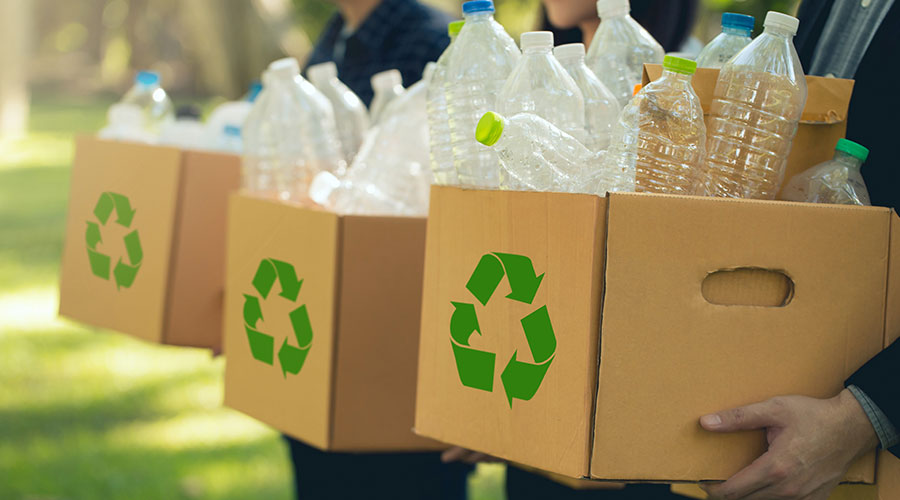The ‘Greening’ of Existing Facilities
The LEED-EB program offers resources and guidance for extending environmental friendliness throughout a building’s life
Environmentally friendly facilities — and their potential to reduce maintenance and energy costs — continue to gain interest among managers in all types of facilities. While many organizations have been focusing their “green” efforts in new construction projects, more maintenance and engineering managers are now taking a closer look at the sustainability of their existing facilities.
“So often, buildings are built with great intentions, but nobody follows up on their performance after they have been operational for a while,” says Robin Smith, the commissioning manager for Emory University in Atlanta.
The Leadership in Energy and Environ-mental Design for Existing Buildings (LEED-EB) program provides organizations with guidance to improve the environmental friendliness and performance of their existing buildings and operations.
“The goals of LEED-EB are to improve a building’s performance with respect to its energy and environment performance while reducing overall operating costs,” says Tom Hicks, the program manager for LEED-EB. The U.S. Green Building Council (USGBC) runs the program, which has attracted more than 100 organizations to register their buildings for LEED-EB certification. Thus far, 16 projects have received LEED-EB certification.
Emory University was one of the first organizations to register a building for the LEED-EB pilot program. Its Goizueta School of Business facility achieved the LEED-EB’s gold certification level in January.
“The LEED-EB program is probably more important for a building owner than the LEED for new construction program because the long-term operating costs of a building are a lot bigger than the initial construction costs,” Smith says.
Program Misconceptions
While the USGBC has seen interest in green technology surge in recent years, misconceptions regarding the LEED-EB program and environmentally friendly products are still prevalent.
“There is a perception that [LEED-EB] is all about really advanced building systems,” says Brendan Owens, the LEED program manager for technical support. “Nothing could be further from the truth. What we’re trying to do in the existing buildings program is recognize good operations and maintenance practices that have an environmental and sustainable slant to it.”
“It doesn’t cost anything to fix buildings,” Smith says. “You actually make money doing it,” he says, adding that the program can help managers discover defects in their buildings, such as inefficient HVAC components.
The program helped Emory University uncover problems with its Goizueta facility. The university selected the building because it seemed like it required little effort to achieve LEED-EB certification, Smith says.
“It was relatively new, only about five years old, he says. “We didn’t have any complaints from occupants, and the equipment appeared to have worked really well. We didn’t realize, however, that we were heating and cooling the building at the same time. That is a fairly common problem, but unless you really do an exceptional job on your metering and monitoring, it’s something you’ll never know.”
“Thanks to the LEED-EB program, we discovered we were wasting $151,000 in energy costs a year. We spent about $94,000 to fix the building. We recouped those costs in less than a year, and now we’re making money.”
Another misconception is that the LEED-EB program focuses on expensive, highly advanced and experimental technologies. Managers might think the USGBC advocates the use of expensive and unproven technologies. Actually, the opposite is true, Owens says.
“We’re advocating for proven technology that may cost less and perform just as well,” he says.
Over the last several years, many environmentally friendly products have improved in performance and decreased in costs, Owens says. For example, environmentally friendly cleaning products have become comparable in price to traditional products, and many perform just as well or even better in some cases, he says.
While several companies tout their products’ environmental friendliness, the council doesn’t recommend specific companies or products in any area of the LEED-EB rating system. Instead, it refers to established standards.
In the case of green cleaning chemicals, it refers to two standards —Standard GS-37, which was developed by the independent non-profit organization Green Seal, and the California Code of Regulations cleaning products with low volatile organic compounds. If a participating organization uses a product that complies with either of those standards, it is eligible for credit in that area.
Commitment Required
Organizations considering the LEED-EB program should understand that meeting the program’s criteria requires a tremendous amount of time and effort, Smith says.
“It’s a lot tougher than people think,” he says. Collecting and verifying the building’s energy performance was particularly challenging, he says. Unlike LEED for new construction, in which applicants base most of the energy performance on a building model, the LEED-EB program bases a building’s performance on actual consumption data.
To comply with the program’s requirements, Smith’s department had to adopt new practices to measure and monitor energy consumption. Prior to beginning the program, the university didn’t specifically track the Goizueta building’s energy consumption. Instead, the university grouped the energy consumption of several buildings together.
“We had to meter all sources of energy in the Goizueta building including electricity, chilled water, steam and regular water,” Smith says. “It took us a while to get set up those monitoring systems.”
Flexibility Allowed
While the LEED-EB program requires participants to take a hard look at their buildings’ performance and operations, it also allows flexibility within its 85 available credits. Organizations can chose among the criteria, which are divided into six categories — sustainable sites, water efficiency, energy and atmosphere, materials and resources, indoor environmental quality, and innovation.
“One of the great things about LEED is that the point structure is very flexible,” Owens says. “Facilities are not penalized for being unable to obtain points in one area of the rating system and might be able to gain certification for succeeding in other areas. That ability to get points in any one section — and really get recognized for the performance in a specific area that the building can excel in — makes the rating system applicable to just about every building that can meet all the prerequisites.”
The innovation category offers the greatest flexibility, which giving participants the opportunity to obtain up to five points for efforts that improve sustainability that aren’t addressed in the existing rating system.
“We want to encourage organizations to be innovative and come up with new ways of being environmentally friendly,” Owens says. “This might include additional CO2 monitoring or some additional ways to increase ventilation.”
While the USGBC understands practices that result in good building performance, no rating system could address everything organizations can do to improve their buildings’ operations and maintenance from an environmental perspective, he says.
“So, if someone comes up with a really good idea on how to do something and it’s outside the scope of what’s already in the rating system, then we want to have an area to be able to recognize the benefit that idea has for the building,” Owens says.
While recent research indicates that high-quality acoustics and lighting has a positive benefit on indoor environmental quality, Owens says, the current rating system doesn’t provide points specifically for acoustical and lighting quality. Participants can earn credit in these areas, however, through the innovation category.
The innovation category also allows recognition of exemplary performance in an area of the rating system. For example, the system provides options to reduce heat islands and minimize the facility’s impact on its surrounding area. One of those options is to maintain a minimum of 50 percent of parking spaces underground.
“If a facility has 100 percent of its parking below ground, that might be a case where it could apply for an innovation credit because it doubled the minimum,” Hicks says.
The total number of points a project earns determines its level of certification. Projects that earn 32-39 points become certified, projects that earn 40-47 points receive a silver rating, those earning 48-63 points achieve a gold rating, and those with more than 64 points receive a platinum rating.
The Path to LEED-EB Certification
The first step in achieving Leadership in Energy and Environmental Design for Existing Buildings (LEED-EB) certification is registering the building with the U.S. Green Building Council (USGBC) on its web site. The organization’s LEED-EB project team then completes the application, which includes checklists that document its performance and ability to meet the program’s prerequisites and criteria for credits.
The USGBC is updating its web site, and applicants will be able to complete these checklists online by the end of March.
After participants submit that documentation, as well as any supplemental information, a review team at the USGBC confirms that the project has met each prerequisite and credit requirement. After a final certification review, the building becomes LEED certified at the appropriate level.
Tom Hicks, the program manager for LEED-EB, recommends managers to attend a workshop that explains the process and the rating system and provides ideas and opportunities that they can take back to their workplaces.
|
Related Topics:











